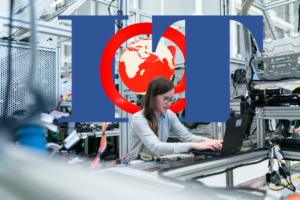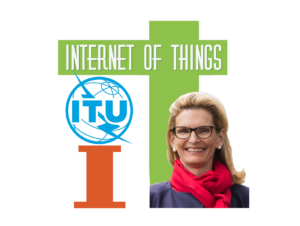Despite the challenges faced by Internet and World Wide Web users (see for example my post on Bots and Network Security), visionaries see how much more the Web can become. John Markoff writing for the New York Times talks about the latest thoughts concerning the Web 3.0 [Entrepreneurs See a Web Guided by Common Sense, 12 November 2006]. Web 1.0 is the World Wide Web that developed in the early 1990s. Web 2.0, Markoff explains, is the “mash up” version of the Web, where one site (such an apartment rental site) uses the content of another (such as Mapquest map) to better inform the reader of what is being presented. Web 3.0 is a much grander vision. As Markoff writes:
From the billions of documents that form the World Wide Web and the links that weave them together, computer scientists and a growing collection of start-up companies are finding new ways to mine human intelligence. Their goal is to add a layer of meaning on top of the existing Web that would make it less of a catalog and more of a guide — and even provide the foundation for systems that can reason in a human fashion. That level of artificial intelligence, with machines doing the thinking instead of simply following commands, has eluded researchers for more than half a century. Referred to as Web 3.0, the effort is in its infancy, and the very idea has given rise to skeptics who have called it an unobtainable vision. But the underlying technologies are rapidly gaining adherents, at big companies like I.B.M. and Google as well as small ones. Their projects often center on simple, practical uses, from producing vacation recommendations to predicting the next hit song. But in the future, more powerful systems could act as personal advisers in areas as diverse as financial planning, with an intelligent system mapping out a retirement plan for a couple, for instance, or educational consulting, with the Web helping a high school student identify the right college. The projects aimed at creating Web 3.0 all take advantage of increasingly powerful computers that can quickly and completely scour the Web.
In other words, Web 3.0, sometimes called the semantic Web, intends on taking advantage of grid computing (or what IBM is trying to market as “utility computing”) to make surfing a faster and more valuable experience. It is called the semantic Web because it will be able to understand more fully what it is that a surfer is looking for.
The Holy Grail for developers of the semantic Web is to build a system that can give a reasonable and complete response to a simple question like: “I’m looking for a warm place to vacation and I have a budget of $3,000. Oh, and I have an 11-year-old child.” Under today’s system, such a query can lead to hours of sifting — through lists of flights, hotel, car rentals — and the options are often at odds with one another. Under Web 3.0, the same search would ideally call up a complete vacation package that was planned as meticulously as if it had been assembled by a human travel agent.
Markoff is quick to point out that Web 3.0 remains a dream and that there are significant technical difficulties to overcome. At Enterra Solutions, we are aware of both the promise and the challenges associated with the semantic Web. We have developed Semantic Paths (TM) for use in our systems and have already begun enjoying the benefits of this relational tool when it comes to bundling rule sets into business processes. On the Web, however:
How such systems will be built, and how soon they will begin providing meaningful answers, is now a matter of vigorous debate both among academic researchers and commercial technologists. Some are focused on creating a vast new structure to supplant the existing Web; others are developing pragmatic tools that extract meaning from the existing Web. But all agree that if such systems emerge, they will instantly become more commercially valuable than today’s search engines, which return thousands or even millions of documents but as a rule do not answer questions directly.
The current state of affairs is a sort of hybrid system, with humans collaborating on the Web to produce meaningful searches.
Today researchers are pushing further. [Nova Spivack, the founder of a start-up firm, Radar Networks, whose technology detects relationships between nuggets of information by mining the World Wide Web], for example, is one of several working to exploit the content of social computing sites, which allow users to collaborate in gathering and adding their thoughts to a wide array of content, from travel to movies.
The databases that Spivack’s company uses store relationships rather than data. Markoff writes about a University of Washington project that uses a semantic database to rate hotels. The system can “understand” concepts like room temperature, bed comfort, cleanliness, etc. as well as ratings such as great, good, okay, etc.
“The system will know that spotless is better than clean,” said Oren Etzioni, an artificial-intelligence researcher at the University of Washington who is a leader of the project. “There is the growing realization that text on the Web is a tremendous resource.” In its current state, the Web is often described as being in the Lego phase, with all of its different parts capable of connecting to one another. Those who envision the next phase, Web 3.0, see it as an era when machines will start to do seemingly intelligent things.
These are early steps towards cognition that, when blended with business logic and technology, will enable businesses to construct IT architectures that today are unimaginable.
Researchers and entrepreneurs say that while it is unlikely that there will be complete artificial-intelligence systems any time soon, if ever, the content of the Web is already growing more intelligent. Smart Webcams watch for intruders, while Web-based e-mail programs recognize dates and locations. Such programs, the researchers say, may signal the impending birth of Web 3.0.
Like all birthing processes, this one is likely to be painful. But the long awaited arrival will mark a new era in connectivity. There are already programs on the Web that help bring meaning to catalogs in ways that have defied technology until now. As the article points out, this wouldn’t have happened without the Web. This is just another confirmation of the fact that, given technologies, people will continue to surprise even the developers of such technology when using it. Each new level of complexity permits characteristics to emerge that could not exist on a less complex level. The future is going to be interesting and I predict that Web 3.0 will be a part of that future.




